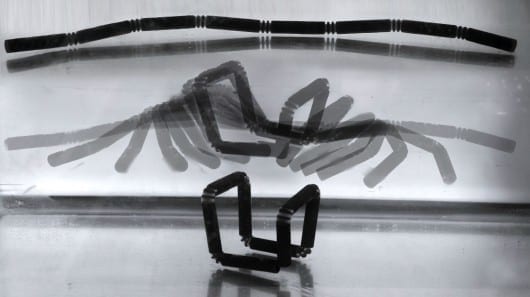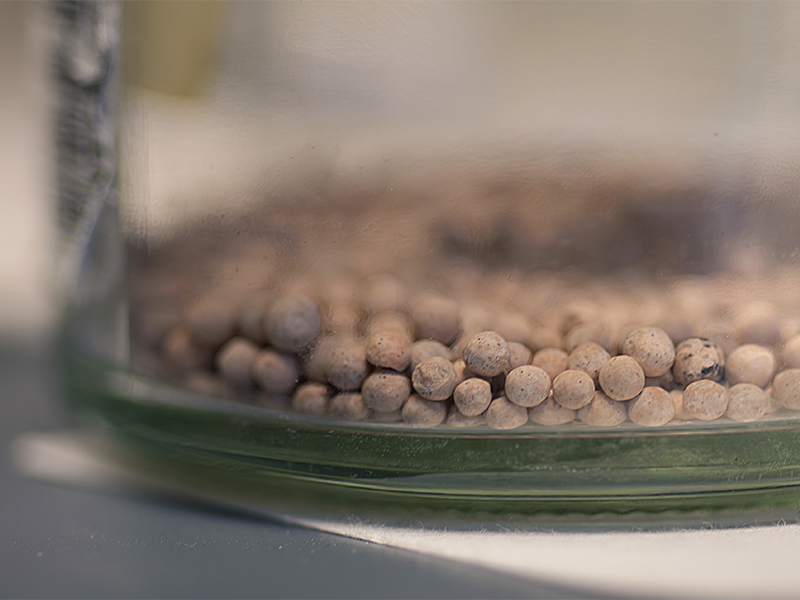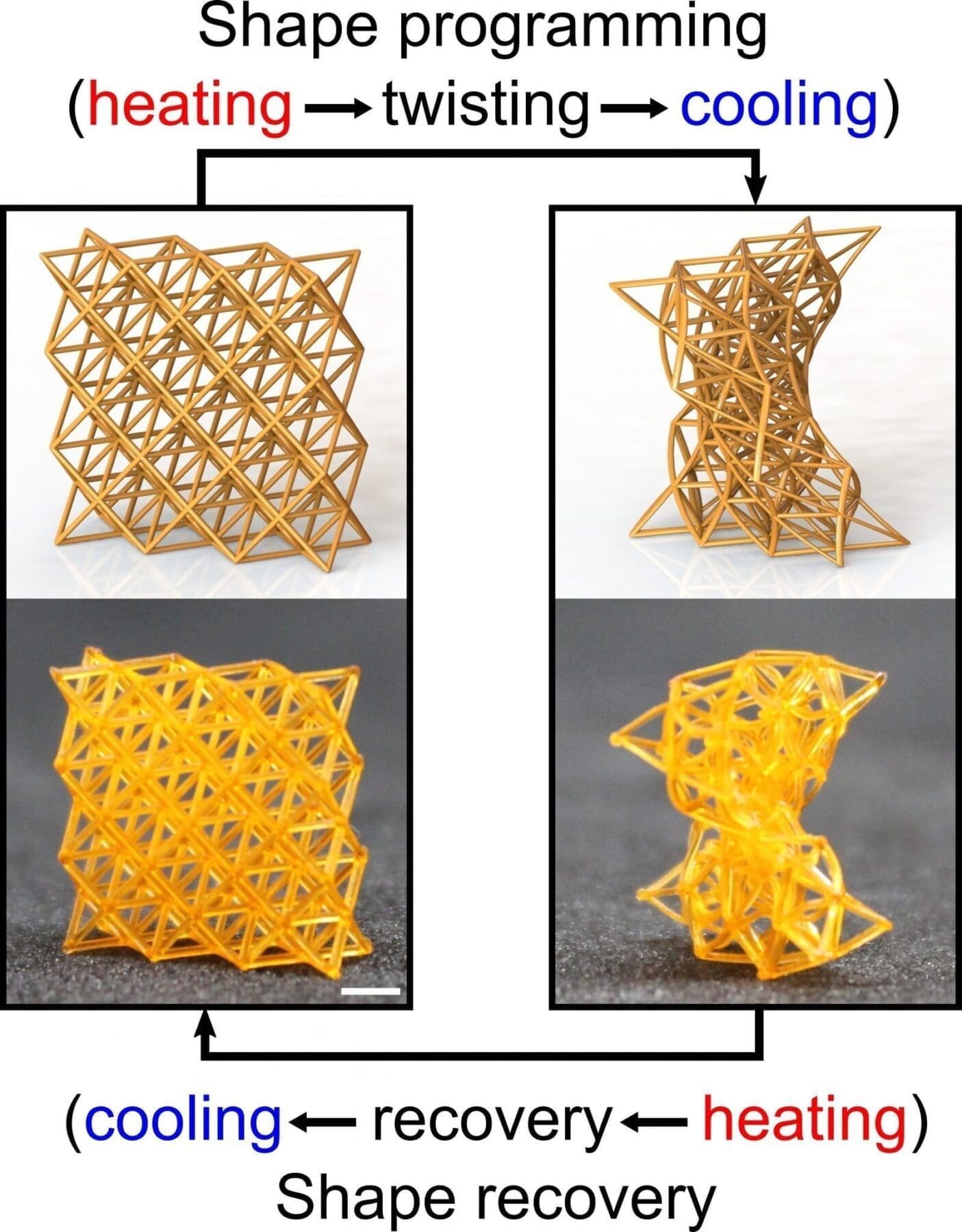
Just imagine buying some flat-pack furniture, bringing it home and enjoying a coffee whilst you watch it assemble itself
Molecular self-assembly, whereby molecules position themselves into defined arrangements, is commonplace in biological systems and nanotechnology. But researchers at MIT are working on so called “4D printing” technology that aims to bring the process up to the macro scale, enabling 3D-printed materials to be programmed to self-assemble into predefined shapes and structures. Just imagine buying some flat-pack furniture, bringing it home and enjoying a coffee whilst you watch it assemble itself.
This month, Skylar Tibbits, director of the MIT Self-Assembly lab, was named as one of the six Architectural League winners for collaborative research into programmable materials. The 4D printing process (with the 4th dimension being self-assembly over time) involves the use of materials that change their shape in response to movement or environmental factors, such as the presence of water, air, and/or temperature changes.
The technology has the potential to change the face of construction and manufacturing and could make it easier to build in extreme environments (including space or other planets) where construction is dangerous or expensive.
Tibbits demonstrates the process in this TED talk, where a self-folding strand that is 3D printed using a “smart” material developed by Stratasys folds into the MIT logo when placed in water, while another object folds into a cube. These are thought to be the first times that a program of transformation has been embedded directly into a material itself.
Tibbits confirms that to apply 4D printing at the macro scale, you would need to combine the right materials and geometry with a tightly coupled energy source, while designing the material interactions that allow it to transform. For the design process, the Self-Assembly Lab team use new Autodesk software called Project Cyborg, which allows them to simulate how and when the various components fold at both a nano and macro scale.
The Latest Bing News on:
Self-assemblng 4D-printed materials
- 4D Printed robot dances and crawls via temperature shiftson April 14, 2024 at 5:00 pm
As reported in a paper published in the journal Advanced Functional Materials ("4D Printed Self-Sustained Soft Crawling Machines Fueled by Constant Thermal Field"), they have created a 4D printed soft ...
The Latest Google Headlines on:
Self-assemblng 4D-printed materials
[google_news title=”” keyword=”self-assemblng 4D-printed materials” num_posts=”10″ blurb_length=”0″ show_thumb=”left”]
The Latest Bing News on:
4D-printed materials
- Robotic nerve 'cuffs' could help treat a range of neurological conditionson April 26, 2024 at 2:00 am
Researchers have developed tiny, flexible devices that can wrap around individual nerve fibers without damaging them.
- Sustainable Methods for Metal AM Feedstock Production Revealed in Research Studyon April 24, 2024 at 12:20 pm
The AMGTA unveils key findings on the energy efficiency of metal AM feedstock processing approaches, shedding light on sustainable manufacturing practices in the additive ...
- Britten-Norman was bought for £1.1m, administrators discloseon April 24, 2024 at 8:23 am
Britten-Norman's new owners acquired the business and assets of the troubled UK aircraft manufacturer for a little over £1 million ($1.36 million), newly published documents reveal.
- Honoring the memory of a beloved companionon April 23, 2024 at 5:11 am
Lauranna Jennen, the new owner of Forever In Our Hearts Pet Cremation Service north of Audubon, Minnesota, now offers customized jewelry and art pieces to commemorate the memory of a beloved pet.
- This alloy is kinkyon April 22, 2024 at 2:20 pm
Researchers have uncovered a remarkable metal alloy that won t crack at extreme temperatures due to kinking, or bending, of crystals in the alloy at the atomic level. Unlike most materials, the new ...
- Linen, cotton, bamboo and more — how to find the best bed sheets for your sleep styleon April 22, 2024 at 8:40 am
The best bed sheets are breathable and durable. Shop sheets from brands like Brooklinen, Cozy Earth and others.
- 3D Printing Market worth $37.4 billion by 2029 - Exclusive Report by MarketsandMarkets™on April 22, 2024 at 7:15 am
The 3D Printing market is projected to grow from USD 17.5 billion in 2024 and is estimated to reach USD 37.4 billion by 2029; it is expected to grow at a Compound Annual Growth Rate (CAGR) of 16.4% ...
- Mechanical Engineering Professor Receives NSF CAREER Awardon April 19, 2024 at 6:58 am
The National Science Foundation awarded Yiwei Han, assistant professor of mechanical engineering, with an NSF Faculty Early Career Development Program grant. The award allots more than $576,000 toward ...
- Trump forced to listen silently to people insulting him as he trades a cocoon of adulation for courton April 18, 2024 at 5:00 pm
NEW YORK (AP) — He seems "selfish and self-serving,” said one woman. The way he carries himself in public "leaves something to be desired," said another.
- What’s the Future of Nike? John Hoke Has Ideason April 17, 2024 at 5:03 pm
The A.I.R. models in Paris were made of hard, 3D-printed material and couldn’t reasonably house a human ... We capture all that in 4D at Nike, and so they can virtually try them on and wear them. None ...
The Latest Google Headlines on:
4D-printed materials
[google_news title=”” keyword=”4D-printed materials” num_posts=”10″ blurb_length=”0″ show_thumb=”left”]










